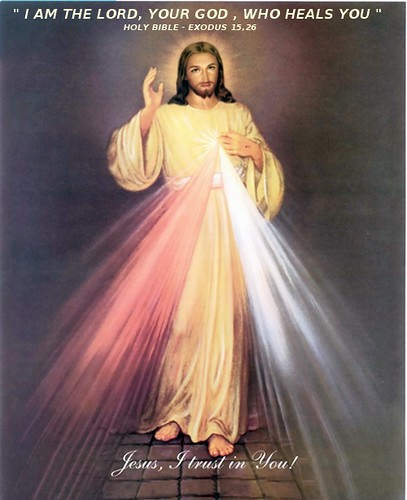This article explores the significance of Jeremiah 18 in biblical prophecy, focusing on its clues to the coming Messiah and the concept of redemption, making connections to other messianic prophecies, historical and archaeological confirmation, and theological implications, while also discussing its relevance to contemporary times.

Photo by Iraj Beheshti on Unsplash | Commercial use allowed
Overview of Jeremiah 18 and Its Significance in Biblical Prophecy
Jeremiah 18 is a pivotal chapter in the Book of Jeremiah, offering profound insights into the redemptive plan of God and the anticipation of the coming Messiah. This chapter holds immense significance within the broader narrative of biblical prophecy, providing a lens through which the themes of restoration, hope, and divine sovereignty are explored. The historical context in which Jeremiah 18 was written plays a crucial role in understanding its relevance, as it sheds light on the challenges and aspirations of the ancient Israelites, thereby enhancing the depth of its significance. Additionally, the impact of Jeremiah 18 on the understanding of the coming Messiah underscores its enduring relevance as a beacon of hope and guidance for believers across generations.
For example, the historical context of Jeremiah 18, situated within a period of political turmoil and moral decay in ancient Israel, provides a backdrop against which the themes of redemption and restoration are vividly portrayed. The challenges faced by the Israelites during this time, including the impending threat of exile and the erosion of their spiritual and moral foundation, underscore the urgency and relevance of Jeremiah’s prophecies about the coming Messiah. This historical backdrop not only enriches the understanding of Jeremiah 18 but also highlights its enduring significance as a source of timeless wisdom and hope in the face of adversity.
Moreover, the significance of Jeremiah 18 within the broader narrative of biblical prophecy is evident in its portrayal of God’s sovereignty and redemptive plan for humanity. The chapter offers profound insights into the concept of divine craftsmanship, using the imagery of a potter and clay to symbolize God’s authority in shaping the destiny of nations and individuals according to His divine purpose. This symbolism not only speaks to the historical context of Israel but also extends to the future promise of deliverance through the Messiah, emphasizing the enduring nature of God’s redemptive plan. Therefore, Jeremiah 18 serves as a beacon of hope, emphasizing the enduring relevance of its themes and prophecies in shaping the understanding of the coming Messiah within the broader landscape of biblical prophecy.
 Clues to the Coming Messiah in Jeremiah 18
Clues to the Coming Messiah in Jeremiah 18
Jeremiah 18 provides profound insights into the coming Messiah through the use of specific clues that are interwoven with the narrative of redemption and restoration. One of the key clues in this chapter is the imagery of the potter and the clay, which symbolizes God’s authority and sovereignty over His creation. The potter’s ability to reshape the clay reflects the transformative power of the Messiah, who brings about spiritual renewal and redemption. This symbol serves as a powerful foreshadowing of the Messiah’s role in reshaping the lives of individuals and the destiny of humankind. For instance, the concept of the broken vessel in Jeremiah 18 is a significant clue that points to the redemptive work of the Messiah. The broken vessel represents the brokenness and sinfulness of humanity, emphasizing the need for restoration and healing that only the Messiah can bring. This imagery finds its fulfillment in the person of Jesus Christ, who proclaimed that He came to bind up the brokenhearted and set the captives free, fulfilling the redemptive promises embedded in the prophecy of Jeremiah 18.
Furthermore, the language used throughout Jeremiah 18, such as the promise of restoration and the renewal of the covenant, echoes the messianic prophecies found in other parts of the Old Testament. For instance, the prophecy of a new covenant in Jeremiah 31:31-34 aligns with the promises of the Messiah ushering in a new era of spiritual renewal and reconciliation between God and humanity. This demonstrates the interconnectedness of messianic prophecies throughout the Old Testament, culminating in the fulfillment of these promises in Jesus of Nazareth. Therefore, Jeremiah 18 not only provides specific clues to the coming Messiah but also contributes to the broader narrative of God’s redemptive plan for humanity, ultimately fulfilled in the person and work of Jesus Christ.
#Jeremiah18, #MessianicProphecy, #JesusChrist, #OldTestament, #NewTestament, #BiblicalInterpretation, #Christianity, #ProphecyFulfillment, #Messiah, #BibleStudy, #ScriptureAnalysis, #PropheticTexts, #ChristologicalInterpretation, #Theology, #Redemption, #SalvationHistory, #BiblicalRevelation, #DivinePromise, #ChristianDoctrine, #MessiahForetold
The Concept of Redemption in Jeremiah 18
Jeremiah 18 beautifully portrays the concept of redemption as a transformative and restorative process, drawing a powerful analogy between God and a potter shaping clay. The imagery of the potter molding and reshaping the clay represents God’s ability to redeem and transform His people, demonstrating His unwavering faithfulness, love, and compassion. This depiction of redemption in Jeremiah 18 serves as a profound reminder of God’s commitment to His covenant people and His enduring promise of restoration. The chapter is replete with redemptive themes and promises, hinting at the ultimate fulfillment of redemption through the awaited Messiah. The correlation between the concept of redemption in Jeremiah 18 and its realization in the Messiah emphasizes the continuity of God’s redemptive plan throughout the narrative of the Old Testament. This linkage underscores the profound theological significance of Jeremiah 18 in shaping the understanding of redemption and hope in the context of the coming Messiah, offering assurance and comfort to those awaiting the fulfillment of God’s promises.
Messianic Prophecies in the Book of Jeremiah
The book of Jeremiah is replete with messianic prophecies that provide profound insights into the redemptive mission and characteristics of the anticipated Messiah. One such prophecy in Jeremiah 23:5-6 vividly portrays the coming of a righteous Branch from the line of David, who would execute justice and righteousness in the land. This portrayal of the Messiah as a descendant of David aligns with the messianic promise of an everlasting kingdom, emphasizing the continuity of God’s covenant and the fulfillment of His redemptive plan. Furthermore, Jeremiah 31:31-34 presents a pivotal prophecy regarding the establishment of a new covenant, distinct from the Mosaic covenant, that would be inscribed on the hearts of God’s people. This prophecy not only anticipates a transformative and intimate relationship between God and His people but also heralds the arrival of the Messiah as the Mediator of this new covenant. The book of Jeremiah also resonates with messianic prophecies found in other prophetic books of the Old Testament, such as Isaiah and Micah, thereby reinforcing the interconnectedness and coherence of the divine message of hope and redemption. For instance, the prophecy in Jeremiah 33:15-16 echoes the imagery of a righteous Branch, corresponding to Isaiah’s prophecy of a shoot from the stump of Jesse in Isaiah 11:1. These parallels underscore the unity of the messianic message across various prophetic writings, culminating in the fulfillment of these prophecies in the person of Jesus Christ.
Connection to Other Biblical Prophecies about the Messiah
Jeremiah 18 serves as a pivotal piece in the tapestry of biblical prophecies concerning the Messiah. Its profound significance lies in its connection to other prophetic texts, such as Isaiah 7:14, which foretells the birth of a child who will be called Immanuel, meaning “God with us.” This connection to Isaiah’s prophecy underscores the consistent thread of anticipation for the coming of the Messiah across different books of the Old Testament. Moreover, Jeremiah 18’s linkage to the book of Micah, particularly Micah 5:2, where the birthplace of the Messiah, Bethlehem, is foretold, further solidifies its place within the web of messianic prophecies. By aligning with Micah’s prophecy, Jeremiah 18 reinforces the collective testimony of the Old Testament regarding the details surrounding the birth and arrival of the promised Messiah. The interconnectedness of Jeremiah 18 with these and other biblical prophecies not only enriches the depth of its significance but also underscores the unified testimony of the Old Testament regarding the coming Messiah. This interconnectedness further emphasizes the meticulous fulfillment of these prophecies in the person of Jesus of Nazareth, providing a compelling testament to the divine orchestration of redemptive history.
 Historical and Archaeological Confirmation of Jeremiah’s Prophecies
Historical and Archaeological Confirmation of Jeremiah’s Prophecies
The prophecies in Jeremiah 18 are not solely confined to the realm of spiritual or religious belief; they have also found substantiation through historical and archaeological discoveries. For instance, the Babylonian Chronicle and the Lachish letters are among the archaeological findings that have corroborated events and prophecies mentioned in Jeremiah 18. These discoveries offer tangible evidence that attests to the historical accuracy of Jeremiah’s prophecies, reinforcing the interconnectedness of biblical prophecy with real-world occurrences. Moreover, the archaeological evidence serves as a testament to the reliability and authenticity of biblical prophecy, providing a window into the historical context in which Jeremiah’s prophecies were delivered. It not only strengthens the faith of believers but also garners scholarly and historical interest in the prophetic accounts found in the Book of Jeremiah. The convergence of historical and biblical narratives through archaeological findings underscores the enduring impact of Jeremiah 18 on the understanding of biblical prophecy and its relevance in historical discourse.
The Theological Significance of Jeremiah’s Prophecies
Jeremiah’s prophecies not only provide historical and future-oriented insights but also hold profound theological significance that enriches the understanding of redemption, hope, and the faithfulness of God. The prophet’s writings reveal the depth of God’s redemptive plan, emphasizing His unwavering faithfulness to His promises throughout history. For instance, in Jeremiah 31:31-34, the promise of a new covenant that will be different from the Mosaic covenant, written on the hearts of His people, signifies the redemptive work that God intends to accomplish through the Messiah. This concept of a new covenant is intricately connected to the redemptive mission of Jesus Christ, who fulfills Jeremiah’s prophecy by establishing a new covenant through His sacrificial death and resurrection. Moreover, Jeremiah’s prophecies resonate within the faith and hope of believers by offering profound insights into the unchanging nature of God’s redemptive purposes. Through his writings, Jeremiah emphasizes the divine attributes of compassion, love, and mercy, reinforcing the theological understanding of God’s character and His redemptive work. For instance, in Jeremiah 32:40, God promises that His people will never turn away from Him, and He will rejoice in doing them good with all His heart and soul, demonstrating His enduring commitment to redemption. This theological significance provides believers with the assurance that God’s redemptive plan is rooted in His unchanging nature, instilling hope and confidence in His faithfulness, both in the historical context of Jeremiah’s time and in the present day.
In summary, Jeremiah’s prophecies offer a theological lens through which to understand the redemptive nature of God, His faithfulness to His promises, and the enduring hope that believers can have in His redemptive work. These prophecies not only provide a historical context but also serve as a timeless source of theological insight, reinforcing the unchanging nature of God’s redemptive purposes and the hope that it brings to those who trust in Him.
Relevance of Jeremiah 18 to Contemporary Times
Jeremiah 18’s prophetic themes and messages are not confined to the ancient world but offer timeless insights that resonate with contemporary challenges and aspirations. Its relevance in modern times is evident in the enduring human struggles with issues such as injustice, moral decay, and the search for hope and redemption. For instance, the concept of redemption depicted in Jeremiah 18 speaks to the longing for restoration and renewal in the face of personal and societal brokenness. This resonates with individuals and communities grappling with the aftermath of trauma, seeking healing and a fresh start. The enduring relevance of Jeremiah 18 underscores its timeless significance, providing enduring hope and assurance in the face of contemporary trials and uncertainties. Moreover, the connection between Jeremiah 18 and the present day is further exemplified in its reflection of the human condition. The portrayal of the potter and the clay in Jeremiah 18 symbolizes the transformative power of God in the lives of individuals and nations. This imagery mirrors the universal human experience of seeking purpose, direction, and transformation amid the challenges of change and adversity. The ability of Jeremiah 18 to capture the human experience in a way that transcends time and culture underscores its relevance to contemporary society, offering profound insights and guidance for navigating the complexities of the modern world. Furthermore, the enduring relevance of Jeremiah 18 is reflected in its capacity to instill hope and resilience in the face of contemporary challenges. The themes of restoration and renewal depicted in this chapter resonate with individuals and communities navigating social, political, and personal upheavals, offering a timeless source of inspiration and guidance. Therefore, Jeremiah 18’s enduring relevance serves as a testament to the timeless wisdom and hope encapsulated within its prophetic messages, offering solace and direction to those grappling with the complexities of contemporary life.
 Recommended Resources for Further Study of Jeremiah’s Prophecies
Recommended Resources for Further Study of Jeremiah’s Prophecies
To delve deeper into the prophecies about the Messiah in the book of Jeremiah, there are several recommended resources that provide scholarly and in-depth analysis. Commentaries by Charles H. Dyer, Warren W. Wiersbe, J.A. Thompson, and R.K. Harrison offer valuable perspectives on the historical and theological context of Jeremiah’s prophecies, shedding light on the intricacies of the Messianic Age and the fulfillment of these prophecies. Moreover, the NIV Cultural Backgrounds Study Bible provides extensive insights into the ancient world of Jeremiah’s time, enhancing the understanding of the cultural, social, and religious milieu in which Jeremiah delivered his prophecies. By exploring these resources, individuals can gain a comprehensive grasp of the multifaceted layers of meaning embedded in the Messianic prophecies of Jeremiah, enabling a more profound appreciation of the profound wisdom and foresight contained within the text. In addition to commentaries and study Bibles, scholarly works such as “Jeremiah and Lamentations” by Hetty Lalleman and “Jeremiah: A Commentary” by Jack R. Lundbom serve as indispensable resources for those seeking a thorough exploration of the book of Jeremiah. These scholarly works provide detailed analyses of the linguistic, literary, and historical aspects of Jeremiah’s prophecies, offering readers a comprehensive and well-rounded understanding of the Messianic themes interwoven throughout the text.
In conclusion, Jeremiah 18 remains an invaluable source of hope and assurance, as it continues to inspire and guide believers in their understanding of the redemptive work of the Messiah. Its enduring significance transcends time, serving as a testament to the unfaltering nature of biblical prophecy and its profound impact on the faith and hope of individuals and communities. Through its detailed clues, interconnected prophecies, and theological implications, Jeremiah 18 stands as a cornerstone of biblical prophecy, offering enduring wisdom and insight into the promise of redemption through the coming Messiah.



